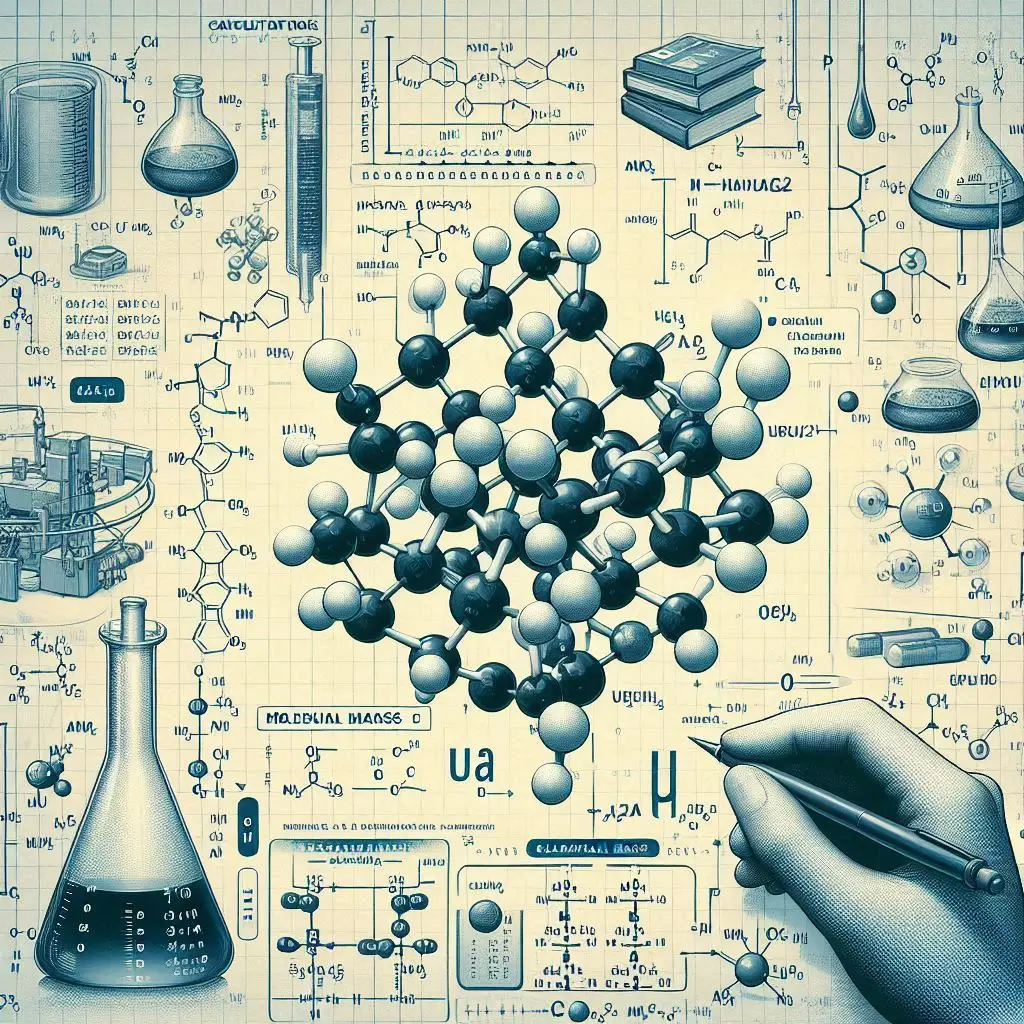
Molecular Mass of Urea: Relative, Calculation, in AMU, and the Formula
Introduction
This article delves into the molecular mass of urea, exploring its relative molecular mass, calculation methods, representation in atomic mass units (amu), and the formula used to determine its molecular mass. Understanding these aspects is crucial for various scientific and practical applications, including chemical reactions and pharmaceutical formulations. By breaking down these components, we can gain a comprehensive understanding of urea's molecular mass.
Urea, a vital compound in both biological and industrial contexts, plays a significant role in the metabolism of nitrogen-containing compounds in the body.
Relative Molecular Mass of Urea
The relative molecular mass of a compound is a dimensionless quantity that represents the sum of the atomic masses of all atoms in a molecule relative to the mass of a carbon-12 atom, which is defined as 12 unified atomic mass units (u). For urea, which has the chemical formula CO(NH₂)₂, the calculation of its relative molecular mass involves summing the atomic masses of its constituent atoms.
Urea consists of one carbon (C) atom, one oxygen (O) atom, and four hydrogen (H) atoms attached to two nitrogen (N) atoms. The atomic masses of these elements are approximately 12 u for carbon, 16 u for oxygen, 1 u for hydrogen, and 14 u for nitrogen. By summing these values, we obtain the relative molecular mass of urea. This relative molecular mass is crucial for stoichiometric calculations in chemical reactions involving urea, ensuring the correct proportions of reactants and products.
Calculating the Molecular Mass of Urea
To calculate the molecular mass of urea, we need to sum the atomic masses of all the atoms in its molecular formula, CO(NH₂)₂. An explanation of the computation is provided in the following steps:
The atomic masses of the elements that are involved should be identified:
o Carbon (C): 12 u
o Oxygen (O): 16 u
o Nitrogen (N): 14 u
o Hydrogen (H): 1 u
2. Multiply the atomic mass of each element by the number of atoms of that element in the molecule:
o Carbon: 12 u × 1 = 12 u
o Oxygen: 16 u × 1 = 16 u
o Nitrogen: 14 u × 2 = 28 u
o Hydrogen: 1 u × 4 = 4 u
3. Sum the results to obtain the total molecular mass:
o Total molecular mass = 12 u + 16 u + 28 u + 4 u = 60 u
Thus, the molecular mass of urea is 60 unified atomic mass units. This calculated value is essential for various chemical applications, including the preparation of solutions with precise concentrations and the analysis of biochemical pathways involving urea.
Molecular Mass of Urea in AMU
The molecular mass of urea can also be expressed in atomic mass units (amu), which are numerically equivalent to unified atomic mass units (u). The term "amu" is often used interchangeably with "u" in many scientific contexts. By convention, the atomic mass unit is defined as one-twelfth of the mass of a carbon-12 atom.
Given that the molecular mass of urea is 60 u, we can directly state that it is also 60 amu. This equivalence simplifies the understanding and communication of molecular masses in different scientific disciplines. Expressing the molecular mass in amu is particularly useful in fields such as molecular biology and biochemistry, where precise measurements and comparisons of molecular masses are critical.
Molecular Mass of Urea Formula
The formula for calculating the molecular mass of any compound, including urea, involves summing the atomic masses of all atoms in the molecule. For urea, the formula can be represented as follows:
Molecular Mass of Urea=(nC×Atomic Mass of C)+(nO×Atomic Mass of O)+(nN×Atomic Mass of N)+(nH×Atomic Mass of H)
Where:
nC is the number of carbon atoms in urea (1)
_nO is the number of oxygen atoms in urea (1)
_nN is the number of nitrogen atoms in urea (2)
_nH is the number of hydrogen atoms in urea (4)
Plugging in the atomic masses:
Molecular Mass of Urea=(1×12u)+(1×16u)+(2×14u)+(4×1u)=12u+16u+28u+4u=60u
This formula provides a systematic method for calculating the molecular mass of urea or any other compound by simply substituting the appropriate atomic masses and the number of atoms of each element in the molecule.
Conclusion
Understanding the molecular mass of urea involves a clear grasp of several concepts: the relative molecular mass, the process of calculating the molecular mass, its expression in atomic mass units (amu), and the formula used for these calculations. The molecular mass of urea, determined to be 60 unified atomic mass units, is derived from the sum of the atomic masses of carbon, oxygen, nitrogen, and hydrogen atoms in its molecular structure. This knowledge is essential for various scientific and industrial applications, providing a foundation for accurate measurements and formulations in chemistry, biochemistry, and related fields. By comprehensively exploring these aspects, we gain valuable insights into the molecular characteristics of urea, enhancing our ability to utilize this compound effectively in diverse contexts.

